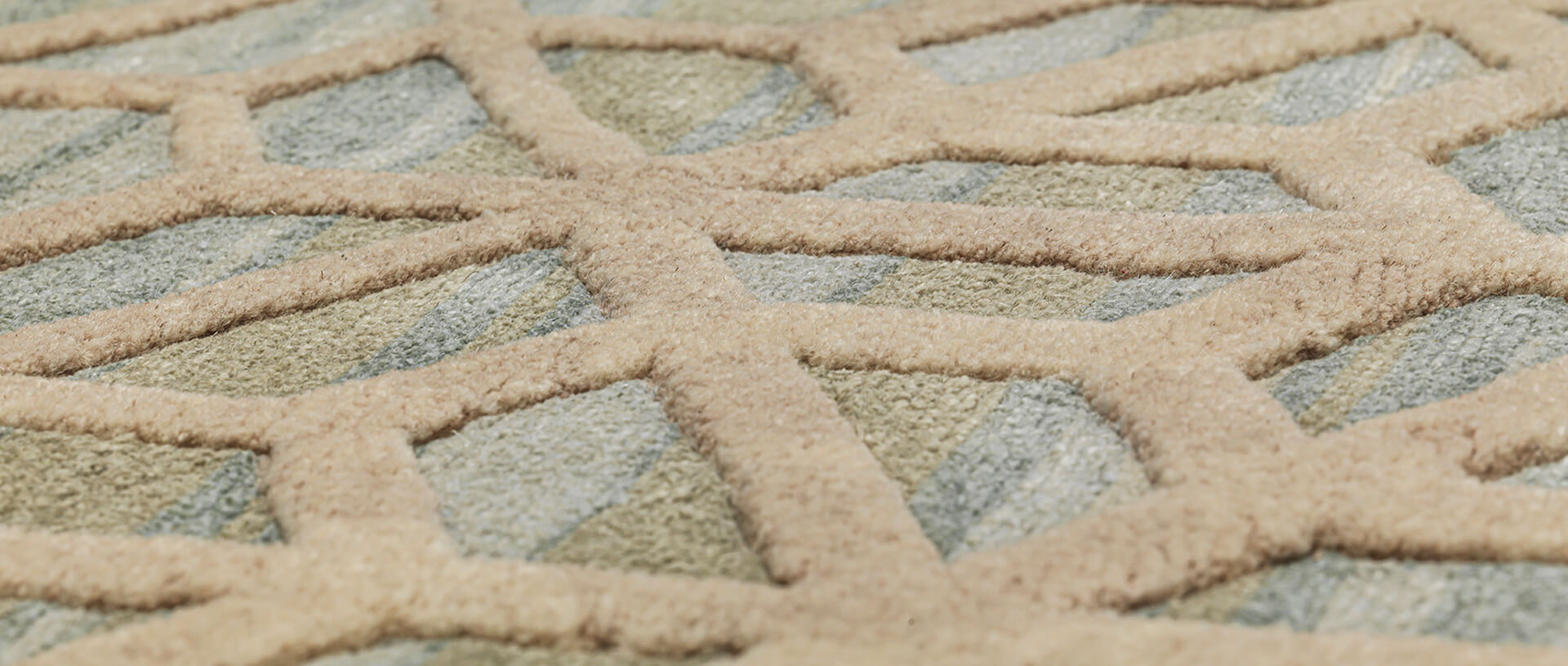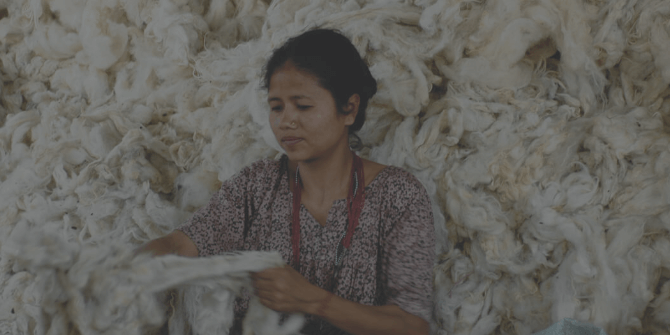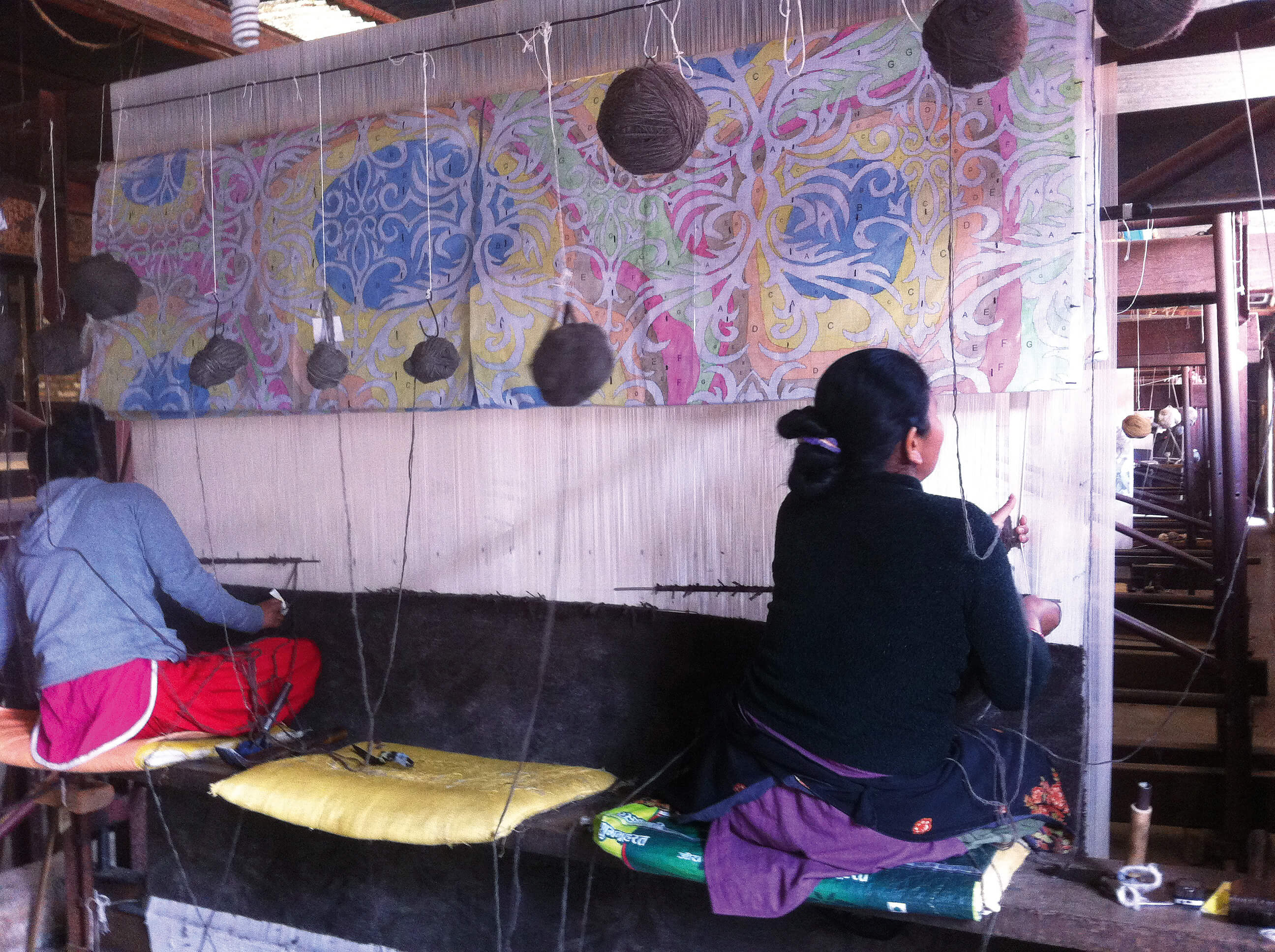
Whether traditional or modern knotted carpets - in our manufactories in Morocco and Nepal, knotted dreams are created entirely by hand from wool and silk. Discover our diversity soon on the collection pages.
Steps of Production
(Delivery time 12–14 weeks)
2. Drying wool
3. Carding
4. Spinning wool into yarn
5. Dying the wool
6. Drawing a template
7. Knotting the rug
8. Washing the rug
9. Scissoring relief
10. Finishing
11. Quality control
12. Delivery
Manufactory in Nepal
For our Nepalese handknotted rugs, we use and combine high-quality materials such as Tibetan highland wool, natural silk, hemp, nettle, or linen. The manufacturing of carpets in Nepal is mainly based on handicraft. Women workers first comb and spin highland wool from Tibet. After coloring the yarn, customized rugs are created by hand on vertical looms. The finished carpets are scrubbed with plenty of water and hung up to dry.
Even though the art of knotting was only brought to Nepal by Tibetan refugees in the 1950s, Nepalese workers have acquired an impressive skill set by now.
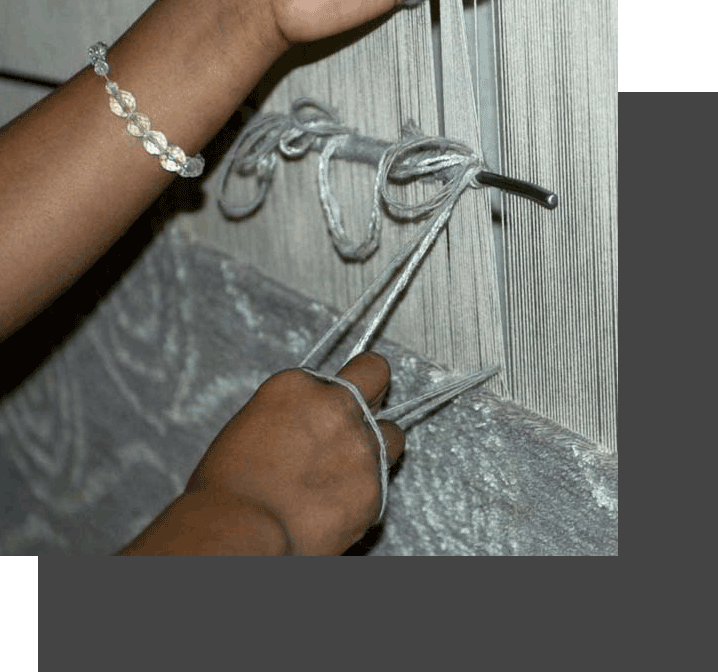
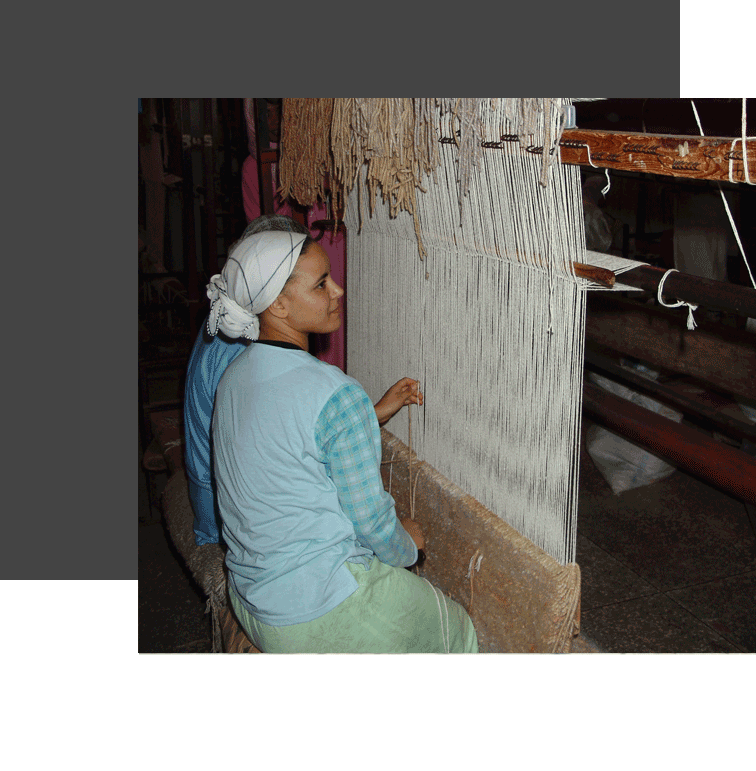
Manufactory in Morocco
For our Morroccan knotted rugs, we rely on a different method. The wool is first colored, then mixed and spun into yarn – similar to our handwoven rugs. Contrary to Nepalese rugs, which are washed at the end, the yarn for Moroccan rugs is felted early on.

